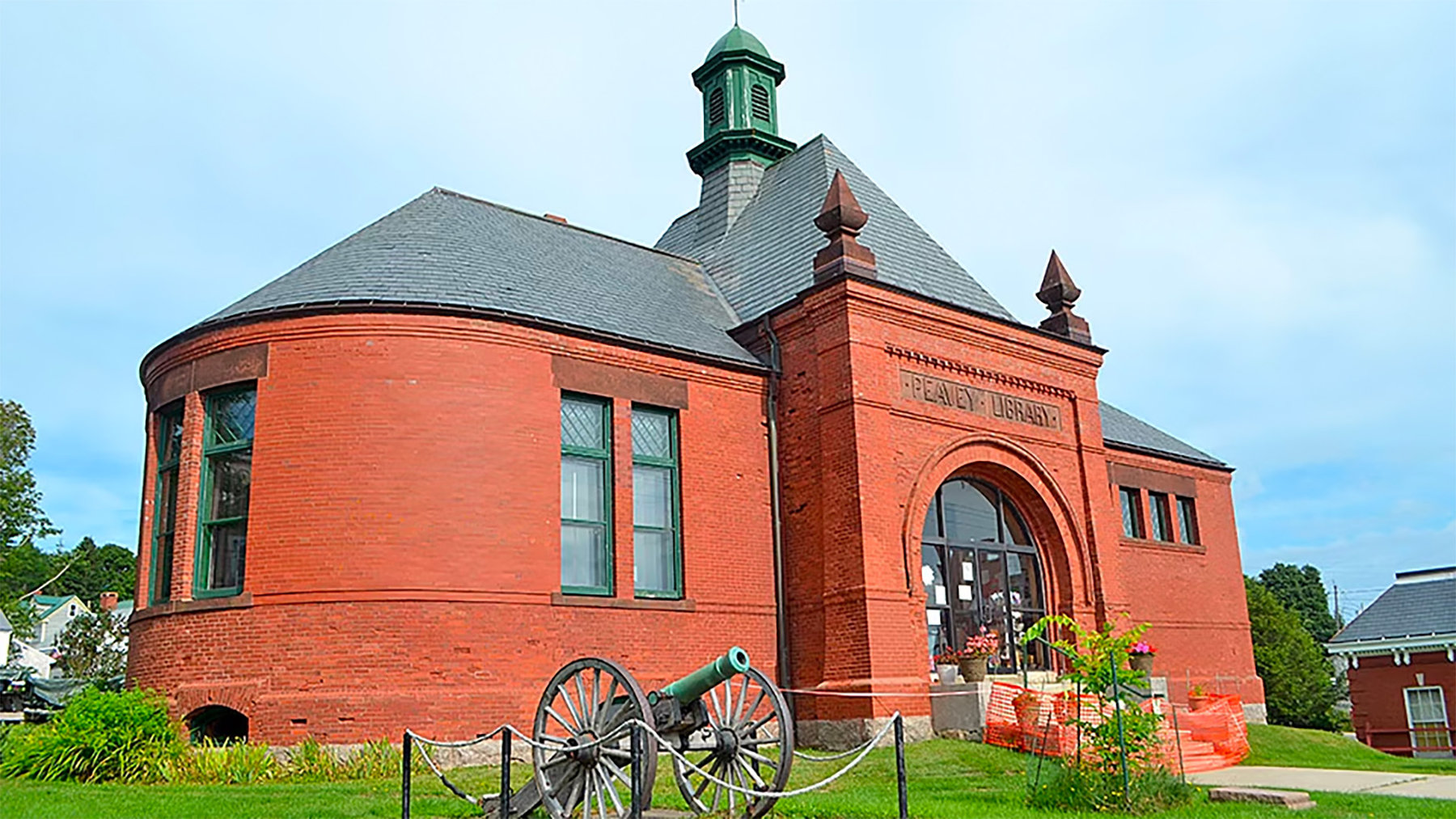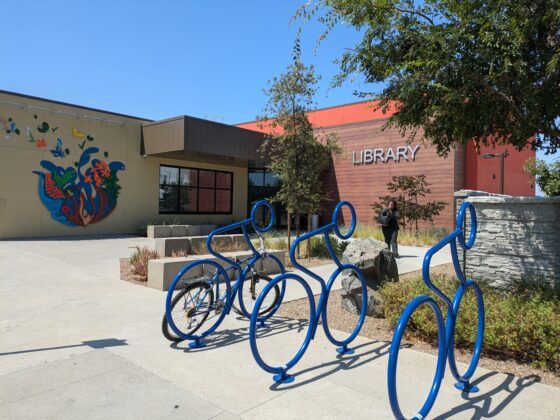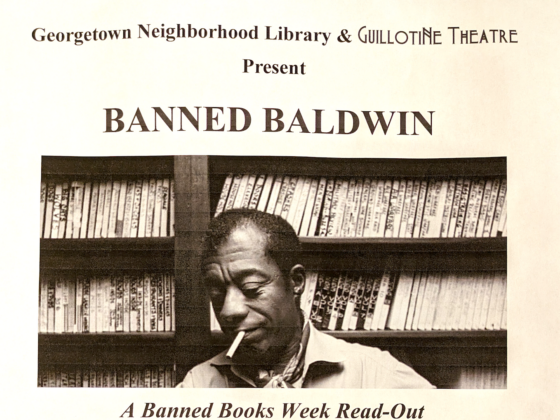Andrew Carnegie was the force of Gilded Age philanthropy behind the building of public libraries. Along with other recognizable names who made their fortune in the late 1800s and early 1900s—Rockefeller, Ford, Mellon, Morgan, Stanford, Harriman, Heinz—Carnegie’s influence endures today largely because of the way he gave away the vast fortune he amassed.
For about 35 years beginning in 1883, Carnegie donated money from his steelmaking empire (which became U.S. Steel) to build nearly 1,700 libraries around the country and another 800 around other parts of the world. He was careful about his “formula” for agreeing to construct the commanding, elegant buildings, a formula whose elements remain fundamental in the basic operations and democratic spirit of public libraries today. The libraries were required, among other things, to support staff and maintenance, to gather at least some of their funding from public sources, and to be open and free to the public to use.
It has been stunning to see the physical and spiritual legacy of Carnegie libraries—large and small—as we have visited more than 50 towns around the country for our Our Towns reporting project. It has been inspiring to bear witness to how libraries have evolved from the simple idea of serving the wants and needs of the public to becoming crucial, essential public institutions of communities in this modern era.
Around the turn of the 20th century in Columbus, Ohio, an audacious city librarian named John Pugh hopped the train for New York to knock on Carnegie’s door, and—appealing to their shared Celtic background— charmed Carnegie into donating $200,000 for the construction of the imposing granite and marble main library in downtown Columbus. Today the building has been newly renovated and expanded, retaining its original main building and entry, where the words open to all are carved in granite over the door. From the library’s main reading room, you can look out the two-story glass windows onto the seven acres of topiary park with more than 200 different types of trees.
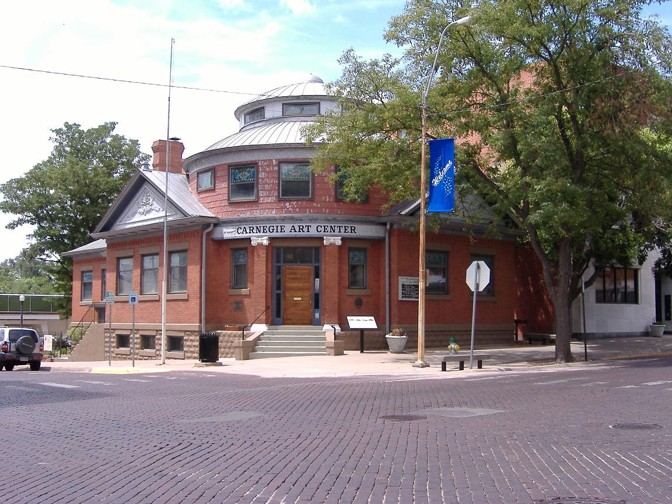
The Carnegie Center for the Arts in Dodge City, Kansas (Courtesy of the Carnegie Center for the Arts)
In Dodge City, Kansas, a small but distinguished group of residents, inspired by the town’s women’s club, appealed to Carnegie in 1905 for support to build their public library, as he had previously done for five other towns in Kansas. He gave them $7,500, and they agreed to ante 10 percent of that sum annually to maintain it. The town’s population grew and eventually outgrew the small library. Today it is home to the Carnegie Center for the Art
Carnegie wasn’t the only one with visions for public libraries. I visited at least two libraries in other towns with lesser-known patrons from the same era who built libraries in the same spirit.
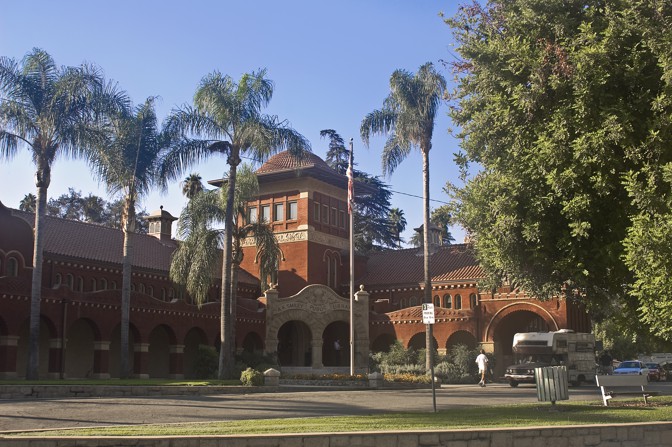
In Redlands, California, Albert and Alfred Smiley, twin transplants from back East like many other early Redlanders, helped develop this paradise of an orange-growing town. So strongly did Albert believe in the institution of the public library that he personally borrowed money to build the town’s public library. He then enticed his good friend Andrew Carnegie to travel to Redlands to see the library himself. During his visit in 1910, Carnegie offered these touching remarks about Smiley and the library:
Before giving libraries, I waited until I had this useless dross that men call money, because it is useless until it is put to some good use, and he could not wait. His love for the cause impelled him to give, and he actually borrowed money—borrowed the money, I say, to build this magnificent structure.
The Peavey Memorial Library in Eastport, Maine, has a story, too: not a Carnegie story, but one that is romantic and similar in its origin. In the late 1800s, Frank Peavey, a native Eastporter, built a library in honor of his father, Albert Peavey, who was born in Eastport and died there at just 35 years old, when Frank was only 9. Frank moved from Maine to the Midwest as a very young man, where he built a fortune in the grain industry. He invested in railroads and lake steamers, and also invented the first circular concrete grain elevator in the U.S. Peavey followed a kind of Carnegie model, with a twist. He built the library in Eastport on the condition that the residents of the town would stock it with 5,000 of their own books.
The library is a deep-red brick one-story building, designed in the Romanesque Revival style. Its main reading room, with a rounded bay on one end, looked to me like its best season would be winter, when people could sit, warm and cozy, reading newspapers or books. There is a collection of dictionaries along one wall of the room, including the massive 1,200-page Passamaquoddy-Maliseet-English Dictionary. It was published in 2008 and still stood proudly on a pedestal the first time I visited, in 2013. Today it remains on display in the reading room, looking a little more thumbed through.
Apart from the original entry and small room of the stacks of books, and an adjacent room with archives of Maine and maritime memorabilia, there is an addition for the children’s room, which doubles as the activities and programs room for the library.
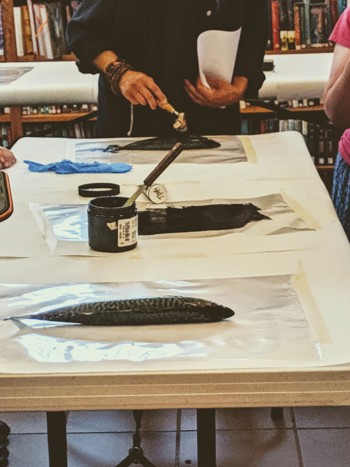
When we visited Eastport this summer, I went to a program featuring one of the Tides Institute’s artists in residence, Ada Cruz, demonstrating gyotakuprintmaking. Gyotaku? Imagine the equivalent of brass-rubbing of a fish. The room strained to hold the crowd, full of people eager to try a hand. Some of the overflow like me spilled outdoors to the book sale, where books were stacked in watertight rubber bins on tables in the backyard.
As for the rest of the programming, Dana Chevalier, the library’s director, says that it’s important for it to organize activities to get a lot of bang for its buck. It tries to be democratic (as libraries are!), integrating programs for young and old alike. The summer list of activities was chockablock and creative. In the high season of summer, when Eastport serves many tourists and summer residents as well as the year-round population, it had organized programs of paper cutting, gardening for health, rock painting, jewelry making, author talks, poetry, tote-bag stenciling, seaweed printmaking, chess, marbleized painting, paper beads, talk about vaping, astronomy, faux stained-glass windows, and home coffee roasting, to name a few.
Eastport is not a wealthy town. And it is small, only about 1,300 year-round residents. That makes for challenges for the library, which operates on a lean budget. Chevalier is the only full-time employee. There is another part-time employee and a corps of loyal volunteers.
As in most public libraries, the computers and internet are crucial to this community. Many people in Eastport can’t afford computers and can’t afford high-speed internet connection. The Pew Research Center reports that for residents of rural areas (like Eastport), access to home broadband is much lower than for non-rural Americans. Some 58 percent of rural Americans subscribe to home broadband, compared with about 70 percent of urban and suburban residents. This is not just a data point for Eastport, explains Chevalier. “It is a reality for them.”
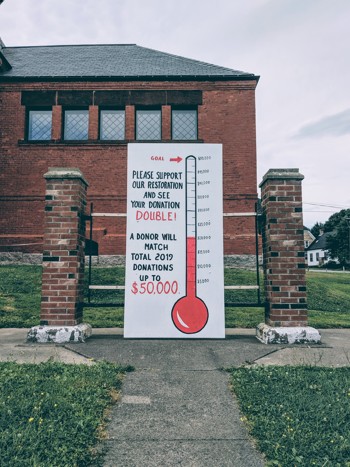
The most serious problem for the library now is its infrastructure: a damaged roof, some crumbling bricks, and problems around the main front entry.
The library is responding on many fronts to raise the money for the fixes. On the weekend we were there, a free music festival in the library’s backyard attracted lots of residents and tourists, who donated their dollars, which will be matched equally by a generous donor. The plywood thermometer sign in front of the library was at $10,000 when we arrived, and at $20,000 a week later. That was still a long way to go to the fundraising goal, which currently stands at about $640,000 dollars. The library also recently hired a grant writer from Bangor to see what it might win from outside the town.
I frequently stumble upon a surprise or two at the libraries I visit. In Eastport, the surprise was a young man named Andrew Wach, who was at the front desk on one of the days I stopped in. Andrew, who grew up in Miami, is stationed in this way-down-east town on a four-year tour of duty with the Coast Guard. He told me that he and the others are encouraged to participate in the town, so they sometimes come over to help move heavy things around in the library. Andrew, a boatswain’s mate, is taking this several steps further. He’s thinking of going to library school when he finishes with the Coast Guard, he said, and he is volunteering at the library regularly now as a way to see and test out the realities of library work for himself.
My husband, Jim, keeps writing that the United States is in the middle of a second Gilded Age, parallel to the half century that followed the American Civil War. Now, as then, technology is creating huge new fortunes, while disrupting or destroying long-established businesses. Now, as then, migration within the country and around the world is rapidly changing communities. Now, as then, national-level politics is struggling (and usually failing) to keep up with events.
One of the outcomes of that era, he also keeps pointing out, is that it eventually triggered many broad waves of reform—in women’s suffrage, through the labor movement, in good-government efforts, in the struggle for civil rights for African Americans and other minorities. And even before that, it spawned the generation of philanthropists, led by Andrew Carnegie, who resolved to use some of their wealth to address the most acute problems of that age.
I wish the Eastport library, Andrew Wach, and the librarians of the future well. And I hope they and their counterparts around the country attract the attention of this era’s potential Carnegies.

